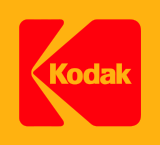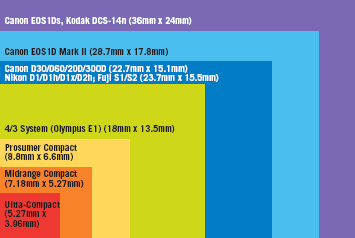No, it’s not easy to detect the precise moment when the trouble began, when the world began to change, when everything that worked for a century suddenly stopped working. There are theories, and books written, and somehow, the old ways seem distant, and inconceivable in their naiveté. And there are new ideas, new companies, new ways of thinking and connecting that don’t much resemble the old. But one thing is clear: everything else may change, but in my world, in your job, in our town, everything is going to be just fine if we just cut some costs, say the magic words “social networking” three times daily, and reinforce one another’s thinking about the value of maintaining the status quo.
 I keep thinking about Kodak. George Eastman was 24 years old when he (and other hobbyists) figured they could build an industry by making photography easier. From 1878 until 1883, he opened a factory, and by 1888, he was selling shares. He struggles to find a market in the US, finds one in Europe, brings it all back home, and by 1900, Kodak is the hot start-up company. It sells cameras for $1 and rolls of film for 15 cents. By 1907, Kodak employs 5,000 people (about the number it employs today). By 1914, Kodak builds a skyscraper. By 1924, George Eastman gives half of his $75 million (in today’s dollars, $2 billion) fortune to charitable causes–including $12 million in start-up funds for what becomes MIT. In 1932, at age 77, Eastman kills himself (the suicide note read: “Why wait?”). Still, Kodak kept on growing: in 1935, Kodak introduced Kodachrome color slide film, in and jumping ahead to 1962, Kodak sales
I keep thinking about Kodak. George Eastman was 24 years old when he (and other hobbyists) figured they could build an industry by making photography easier. From 1878 until 1883, he opened a factory, and by 1888, he was selling shares. He struggles to find a market in the US, finds one in Europe, brings it all back home, and by 1900, Kodak is the hot start-up company. It sells cameras for $1 and rolls of film for 15 cents. By 1907, Kodak employs 5,000 people (about the number it employs today). By 1914, Kodak builds a skyscraper. By 1924, George Eastman gives half of his $75 million (in today’s dollars, $2 billion) fortune to charitable causes–including $12 million in start-up funds for what becomes MIT. In 1932, at age 77, Eastman kills himself (the suicide note read: “Why wait?”). Still, Kodak kept on growing: in 1935, Kodak introduced Kodachrome color slide film, in and jumping ahead to 1962, Kodak sales  exceeded $1 billion, and the company was heavily invested in future technologies, a strategy employed well into the 2000s, when the company was an early leader in digital photography at all levels, from medical imaging to consumer cameras.
exceeded $1 billion, and the company was heavily invested in future technologies, a strategy employed well into the 2000s, when the company was an early leader in digital photography at all levels, from medical imaging to consumer cameras.
Kodak was the Google of its day. — The Economist (see history or official Kodak history)
Today, Kodak is almost non-existent. Nearly gone. After closing its factories, leaving the camera business and nowadays, selling off its patents, a century’s success is fading like the (Polaroid) snapshot in Back to the Future 2.
Why did Kodak fail? Some theories:
Kodak did not fail because it missed the digital age. It actually invented the first digital camera in 1975. However, instead of marketing the new technology, the company held back for fear of hurting its lucrative film business, even after digital products were reshaping the market. — Forbes.
And then there are companies like Kodak — which saw the future and simply couldn’t figure out what to do. Kodak’s Chapter 11 bankruptcy filing on January 19 culminates the company’s 30-year slide from innovation giant to aging behemoth crippled by its own legacy. — Knowledge@Wharton
The company might have been able to innovate more quickly on the digital front if it had set up a separate lab in Silicon Valley, then allowed it to grow independently and tap into the area’s tech culture and expertise.” — Knowledge@Wharton
And what should Kodak have done?
— Enter the cell phone business? It tried this a bit. Didn’t work.
— Recognize that it was really in the memory business and diversify into storage? Nice try.
— Increase its R&D? Kodak did that, spending most of the money on improving film technology.
— Diversify into healthcare? It did that too. Didn’t work.
— Spin off its chemical business? It did that, generating some cash. But small potatoes.
— Integrate backwards into semiconductors? Way out of its competency.
In the end, Kodak (now on the brink of bankruptcy) was a well run company that failed. It was an early technology company, and it never lost its technology roots. It then became a marketing behemoth and a superb consumer company. It then morphed into a financially run enterprise and it did that well–until it failed. — Information Week
And what does this mean for the rest of us?
That’s a question I want to explore in future blog articles. Clearly, the digital revolution in motion, gaining considerable momentum as the spookiness of the dot.com bubble fades from memory. I would imagine that schools and education will be the next frontier, the next “it can’t happen here” that will be utterly transformed, but there are significant political and economic class issues driving the status quo. I wonder whether the top ranks of the Fortune 500 will continue to be dominated by companies associated with cars and fuel in thirty years (remember: thirty years ago, Kodak was still hot stuff). We’re been seeing tremendous technology-driven changes in health care, and now, with new rules and an increasingly stable economy, and the dreadful statistics about health care needs of aging baby boomers, the opportunities in this area seem rich, particularly in the digital space (tele-medicine, patient education, digital tracking of patience care, etc.)




